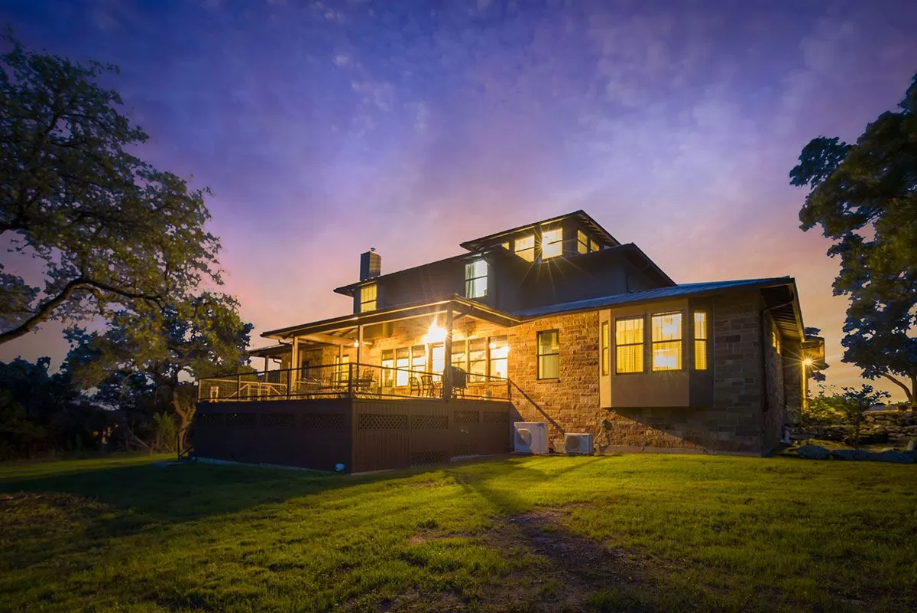
When constructing a new home, safety is often at the forefront of every homeowner’s mind, and one of the most critical safety concerns is fire resistance. Wildfires and house fires can cause catastrophic damage in just moments, but building a fire-resistant home construction can significantly reduce the risks.
In this blog, we’ll explore the key strategies and materials needed to build a fire-resistant home that will stand the test of time.
Why Build a Fire-Resistant Home?
A fire-resistant home is designed to withstand the heat and flames that come with fire. It incorporates specific construction methods and materials to slow the spread of fire, prevent embers from igniting the structure, and protect occupants long enough to escape or wait for help. For homeowners in fire-prone areas or those looking to invest in long-term safety, fire-resistant home construction is a valuable investment.
Key Strategies for Fire-Resistant Home Construction
To ensure your home is prepared to withstand the threat of fire, there are several critical strategies to consider during the design and construction phases.
-
Fire-Resistant Materials
The materials used in your home’s construction will significantly impact its fire resistance. Fire-resistant home construction relies heavily on specific materials designed to resist flames and high temperatures. Here’s a breakdown of materials that should be incorporated into your home:
- Concrete and Brick: Concrete and brick walls are naturally fire-resistant and offer excellent protection.
- Steel Frames: Steel is another non-combustible material that provides structural integrity during a fire.
- Fire-Resistant Roofing: Roofs are highly vulnerable during fires. Opt for metal or clay tile roofing, which are more resistant to fire compared to traditional asphalt shingles.
- Fire-Rated Windows and Doors: Install tempered glass or fire-rated windows, which are designed to withstand higher temperatures.
-
Fire-Resistant Exterior Design
The exterior design of your home plays an essential role in its fire resistance. You should aim for a fire-resistant envelope that minimizes the risk of fire exposure. Key considerations include:
- Non-Combustible Siding: Wood siding can catch fire easily, so consider using fibre cement, stucco, or brick for your siding.
- Landscaping: Maintain defensible space around your home by using fire-resistant plants and creating buffer zones that reduce the spread of fire from vegetation.
-
Fire-Resistant Insulation
Fire-resistant insulation is another critical element to include in your home. Certain insulation materials can help slow the spread of fire and reduce the intensity of heat inside the structure.
- Fiberglass Insulation: This material is fire-resistant and can prevent fire from moving through walls or ceilings.
- Mineral Wool Insulation: Known for its ability to withstand extreme heat, mineral wool is an excellent choice for ensuring that your insulation does not contribute to the spread of fire.
-
Defensive Features
Additional defensive features can further enhance your home’s fire resilience:
- Fire-Resistant Barriers: Install fire-resistant barriers between rooms and sections of the home to contain flames and slow their spread.
- Sprinkler Systems: Automatic sprinkler systems can significantly reduce the impact of a fire by suppressing it before it causes severe damage. These systems are especially important for areas like kitchens and basements.
-
Regular Maintenance and Inspections
Even the most well-built fire-resistant home requires regular maintenance. Over time, materials can degrade, and exposure to the elements may weaken the home’s defences. Ensuring that your fire-resistant features are maintained is key to keeping your home safe. Consider:
- Routine Inspections: Have a professional inspect your home every few years to ensure that fire-resistant materials and systems are in good condition.
- Regular Cleaning: Keep gutters clean and free of debris, which can catch fire during dry conditions or high winds.
FAQs
What is a fire-resistant home?
A fire-resistant home is designed with specific materials and construction methods to prevent the spread of fire and provide maximum protection to its occupants during a fire emergency.
How much does fire-resistant home construction cost?
The cost can vary depending on the materials used, the size of the home, and the level of fire resistance desired.
Can I make my existing home fire-resistant?
Yes, there are several retrofitting options available to improve the fire resistance of existing homes, such as installing fire-resistant siding, roofing, and windows, as well as adding fire-resistant barriers inside the home.
How can I ensure my home is fire-safe during construction?
Work with a trusted builder like Built Green Custom Homes, which specializes in fire-resistant home construction.
Are fire-resistant homes more expensive to maintain?
No, fire-resistant homes tend to have lower maintenance costs due to the durability and longevity of the materials used.
Ready to Build a Fire-Resistant Home?
If you’re interested in constructing a safe, durable, and fire-resistant home, trust the experts at Built Green Custom Homes. With their specialized knowledge in fire-resistant construction, they can help you build a home that will protect your family for years to come. Contact Built Green Custom Homes today to start designing your fire-safe future!

